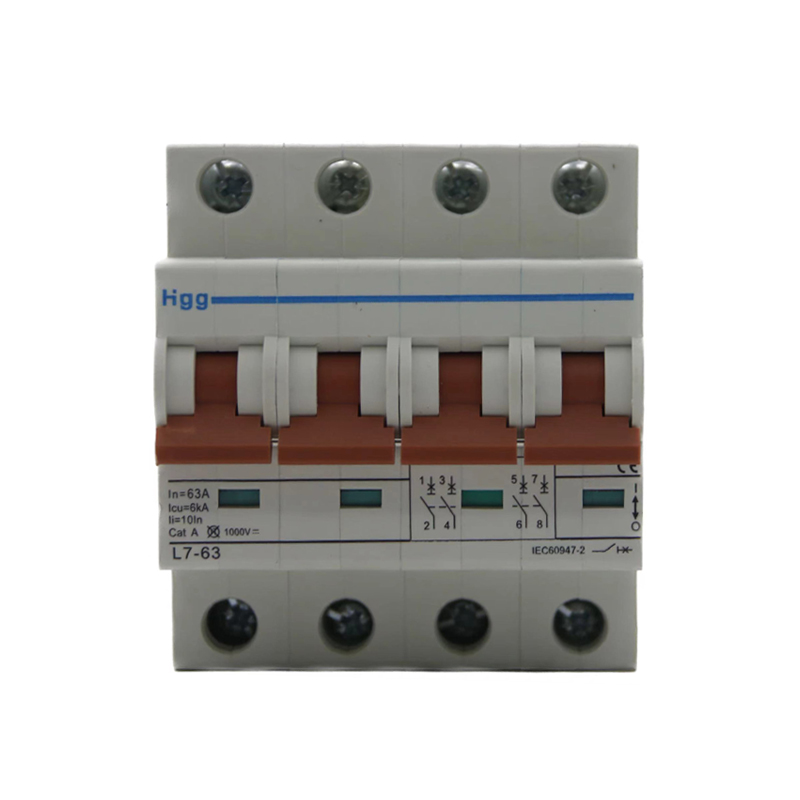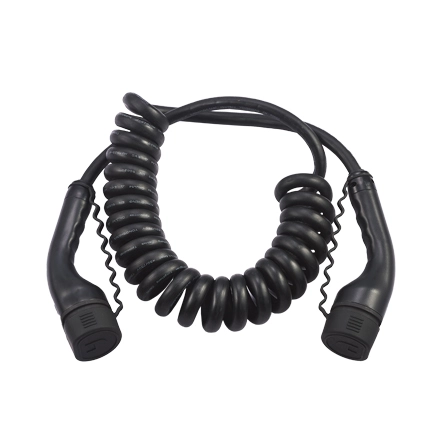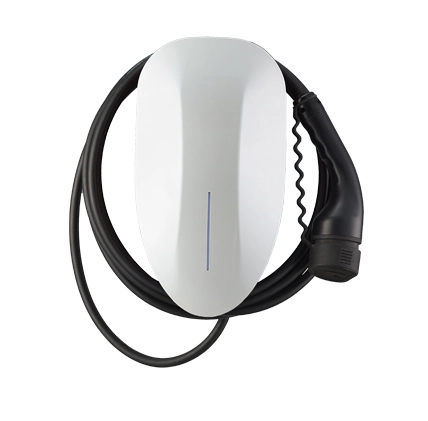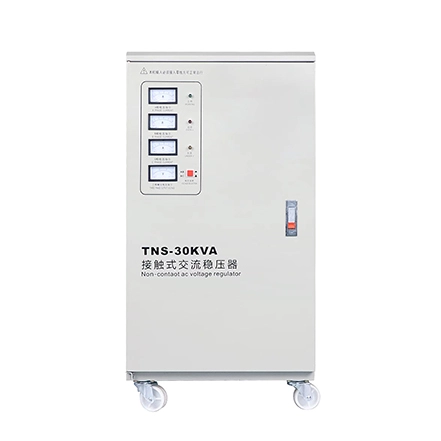Basic Knowledge about circuit breaker
What is a Circuit Breaker?

A circuit breaker is akin to a water faucet in your home's plumbing system. Just as a faucet controls the flow of water, a circuit breaker controls the flow of electricity. At a glance, a circuit breaker looks like a small rectangular box with switches, typically found in electrical panels.
How Does It Work and What's Its Primary Function?
Imagine turning on a faucet, and water flows smoothly. But what if there's a sudden surge of water, threatening to flood your home? The faucet, in this analogy, automatically shuts off to prevent damage. Similarly, a circuit breaker detects surges in electrical current and "turns off" the electricity to prevent potential harm to appliances and wiring.
Why Do We Need Circuit Breakers? Can't We Use Other Devices?
While there are devices like fuses that offer protection, circuit breakers are reusable and provide a more efficient and immediate response to electrical surges. Think of it as having a faucet that you can turn back on after it auto-shuts, rather than replacing a burst pipe (fuse) every time there's too much water pressure.
The Importance of Circuit Breakers in the Electrical System:
An electrical system is like a network of water pipes, delivering electricity (water) to various appliances (outlets). The main components include power sources, transmission lines, transformers, and distribution systems.
Without a circuit breaker, an electrical surge (akin to a sudden, massive rush of water) could damage appliances, cause fires, or even result in electrical shocks. Just as a faucet protects your home from flooding, a circuit breaker safeguards your home and devices from electrical dangers.
Common faults like short circuits or overloads are similar to blockages in water pipes or an unexpected increase in water pressure. These can trigger the circuit breaker to act, cutting off the electricity flow.
To ensure a circuit breaker is functioning correctly, one can periodically test it, much like checking if a faucet works by turning it on and off. If a circuit breaker is damaged or frequently trips, it's crucial to consult an electrician, just as you'd call a plumber for persistent water issues.
Principle of Circuit breaker
What is overcurrent? How is it produced?
· Overcurrent is when the flow of electricity (current) in a circuit exceeds its designed limit.
· Water Analogy: Imagine a garden hose. Overcurrent is like water flowing through the hose at a rate that's too high, which might cause the hose to burst.
What is a short circuit? How is it different from overcurrent?
· A short circuit is a direct connection between the positive and negative sides of a power source, causing a surge of current.
· Water Analogy: If you directly connect the start and end of a hose, the water has a direct path and flows rapidly, potentially causing damage. This is like a short circuit.
How does a circuit breaker "know" when there's too much current or a short circuit? What sensors or technology do they use?
· Circuit breakers often use electromagnetic relays or bimetallic strips that respond to the heat generated by excess current.
· Water Analogy: Think of a hose with a pressure sensor. If water pressure (current) gets too high, the sensor triggers a valve to shut off the flow.
How to disconnect the circuit:
How does a circuit breaker physically "disconnect" a circuit? What's its internal structure like?
· Inside a circuit breaker, there's a switch mechanism that's triggered to move to the "off" position when overcurrent or a short circuit is detected.
· Water Analogy: It's like a valve in a water pipe. When the pressure is too high, the valve automatically shuts, stopping the water flow.
After a circuit breaker disconnects a circuit, how do we "reset" or "restart" it?
· Most circuit breakers have a manual lever or button. Once the fault is cleared, you can manually reset the breaker to the "on" position.
· Water Analogy: After closing a valve due to high pressure, once the issue is resolved, you can manually reopen the valve to resume water flow.
How is a circuit breaker different from switches in our homes? Do they work on similar principles?
· Both circuit breakers and switches can open or close a circuit. However, switches are manual devices used to control power, while circuit breakers automatically disconnect power during faults.
· Water Analogy: A switch is like a faucet handle that you turn on/off manually. A circuit breaker is like a safety valve that automatically closes when there's too much pressure
Types of circuit breakers
Air Circuit Breaker (ACB)
· Working Principle: Utilizes air as the insulating medium to interrupt the circuit.
· Why can air act as an insulator?: Air, in its natural state, is a poor conductor of electricity. When a high voltage is applied, the air between the contacts becomes ionized, allowing current to pass. The ACB is designed to quickly separate the contacts, increasing the distance over which the arc must travel, causing the arc to be extinguished.
· Advantages:
o Simple maintenance.
o Lower cost.
· Disadvantages:
o Insulation performance decreases in high-voltage applications.
Miniature Circuit Breaker (MCB)
· Working Principle: Designed for circuit protection in homes and small commercial applications.
· How is an MCB different from a regular switch in homes?: While both can be used to turn off circuits, an MCB is designed to automatically turn off in the event of an overload or short circuit, providing protection. A regular switch, on the other hand, is a manual device used simply to control power and does not offer such protection.
· Advantages:
o Easy installation.
o Low cost.
o Simple maintenance.
· Disadvantages:
o Typically suitable only for low-voltage applications.
Residual Current Circuit Breaker (RCCB)
· Working Principle: Monitors the difference in current values between live and neutral conductors. If an imbalance is detected, indicating a possible earth fault, the external RCCB will trip and disconnect the circuit.
· Advantages:
o Provides protection against electric shock and electrical fires caused by earth faults.
o Sensitive to even small leakage currents.
· Disadvantages:
o Does not provide protection against overloads or short circuits. This is why they are often used in conjunction with MCBs.
Molded Case Circuit Breaker (MCCB)
· Working Principle: Uses a temperature-sensitive device and a magnetic device to provide both thermal and magnetic trip actions, offering protection against overloads and short circuits.
· Advantages:
o Suitable for higher current applications compared to MCBs.
o Adjustable trip settings.
o Can handle larger power loads.
· Disadvantages:
o More expensive than MCBs.
o Larger in size.
Applications for circuit breaker and related questions:
Home and Commercial Buildings
· Why do homes and offices need circuit breakers?
o Circuit breakers, such as mini RCD circuit breakers, are essential safety devices that protect electrical circuits from being damaged by excess current. They prevent potential electrical fires and protect appliances and devices from damage due to electrical surges.
· Where are circuit breakers located in homes and commercial buildings? Where can I find them?
o Circuit breakers are typically located in electrical panels, often referred to as breaker boxes or distribution boards. In homes, these panels are usually found in basements, utility rooms, or garages. In commercial buildings, they might be in dedicated electrical rooms or closets.
· How do they protect electrical devices in homes and commercial buildings?
o When there's an overload or a short-circuit, the circuit breaker detects the excess current and "trips" or breaks the circuit, cutting off the electricity. This prevents the wires from overheating and potentially causing a fire.
Industrial Equipment and Machines
· Why do industrial machines need special circuit breakers?
o Industrial machines often operate at higher voltages and currents. They require specialized circuit breakers that can handle these conditions and offer features like adjustable trip settings or advanced protection mechanisms.
· How do circuit breakers protect these large machines from damage?
o Circuit breakers monitor the flow of electricity to the machines. If there's an abnormality like an overload, short circuit, or phase failure, the breaker trips, cutting off the power and preventing potential damage to the machine.
· How do circuit breakers react if there's an issue with the machine?
o If a machine malfunctions and draws too much current or if there's a short circuit within the machine, the circuit breaker will detect the irregularity and trip, stopping the flow of electricity to the machine.
Power Transmission and Distribution Networks
· How is electricity transmitted from power plants to homes and businesses?
o Electricity is generated at power plants and then transmitted through high-voltage lines across long distances. It reaches substations where the voltage is stepped down and then distributed through lower voltage lines to homes and businesses.
· What role do circuit breakers play in this process?
o Circuit breakers in substations and distribution networks protect the electrical system from faults. They isolate sections of the network that experience issues, ensuring uninterrupted power supply to other areas.
· How is safety ensured in the event of a major electrical fault?
o In the event of a major fault, multiple circuit breakers at different points in the network will trip, isolating the affected area. This prevents the fault from spreading and causing widespread outages or damage.
Special Applications: Trains, Ships, and Planes
· Why do moving vehicles like trains and planes need circuit breakers?
o Moving vehicles have electrical systems and devices that require protection from electrical faults. Circuit breakers ensure the safety of these systems, the vehicle, and its passengers.
· How are these circuit breakers different from those in homes and commercial buildings?
o Circuit breakers in vehicles are often designed to withstand vibrations, rapid temperature changes, and other specific conditions of the transportation environment. They might also have specialized features suited for the vehicle's electrical system.
· How is electrical safety ensured in these vehicles during emergencies?
o In emergencies, circuit breakers will trip if there's an electrical fault, preventing further complications. Many vehicles also have backup power systems and redundant circuits to ensure essential systems remain operational.
Four functions of circuit breaker:
Overcurrent Protection
· What does this mean? How is overcurrent produced?
o Overcurrent refers to a situation where the current flowing through an electrical circuit exceeds its designed limit. This can be caused by an overload (too many devices drawing power at once) or a fault in the circuit.
· What impact does overcurrent have on equipment and lines?
o Overcurrent can generate excessive heat, leading to damage or even melting of equipment, wires, and insulation. This can reduce the lifespan of equipment, cause fires, and pose a safety risk.
· How do circuit breakers detect and respond to overcurrent?
o Circuit breakers have internal mechanisms (often electromagnetic) that sense the amount of current flowing. If the current exceeds a predetermined limit, the breaker trips, disconnecting the circuit and preventing further flow of electricity.
Short Circuit Protection
· What is a short circuit? How is it different from overcurrent?
o A short circuit occurs when electricity takes a "shortcut" and bypasses the normal path, often due to exposed or crossed wires. While overcurrent can be caused by an overload or a fault, a short circuit is a specific type of fault where the resistance drops to a very low value, causing a sudden surge in current.
· What harm can a short circuit cause to the electrical system?
o Short circuits can cause rapid overheating, leading to fires, equipment damage, and potential harm to individuals nearby.
· How do circuit breakers quickly identify and disconnect short circuits?
o Circuit breakers are designed to detect sudden surges in current (indicative of a short circuit) and trip almost instantly to disconnect the faulted section of the circuit.
Earth Fault Protection
· What is an earth fault? Why is it a problem?
o An earth fault, or ground fault, occurs when electricity unintentionally flows to the ground, usually due to damaged insulation. It's a problem because it can lead to electric shock hazards and equipment damage.
· How is an earth fault different from a short circuit?
o While both are types of faults, an earth fault specifically involves current flowing to the ground, whereas a short circuit involves current bypassing its intended path within the circuit.
· How do circuit breakers detect earth faults and what measures do they take?
o Specialized devices, like Ground Fault Circuit Interrupters (GFCIs) or Residual Current Devices (RCDs), monitor the balance of current between live and neutral wires. If an imbalance is detected (indicative of current leaking to the ground), the device trips and disconnects the circuit.
Remote Control and Monitoring
· Does this mean I can control the circuit breaker from a distance?
o Yes, modern circuit breakers, especially in industrial settings, can be equipped with remote control capabilities, allowing operators to trip or reset them from a distance.
· What are the benefits of remote control and monitoring?
o It enhances safety by allowing operators to control breakers without being physically near potentially hazardous equipment. It also improves efficiency, as faults can be addressed more quickly, and system performance can be monitored in real-time.
· How is this feature implemented? What technology or equipment is needed?
o This is achieved using communication modules and protocols integrated into the circuit breaker, allowing it to be connected to a central control system or network. The necessary equipment includes communication interfaces, sensors, and sometimes dedicated software for monitoring and control.
The selection of circuit breaker and application
How to Choose Based on Electrical Needs:
· For Homes: MCBs are commonly used for individual circuits (like lighting, heating), while RCCBs or GFCIs are essential for bathrooms, kitchens, and outdoor outlets.
· For Offices: MCBs for individual rooms or sections, and MCCBs for larger electrical equipment or the main power distribution. RCCBs or GFCIs for areas like pantries or restrooms.
· For Factories/Industrial Settings: MCCBs and ACBs for main power distribution. VCBs for medium voltage requirements. Specific machinery might also have dedicated MCCBs based on their power needs.
Summary:
In this comprehensive guide, we delve deep into the world of circuit breakers, essential devices that safeguard our electrical systems.
Starting with the basics, we draw parallels between water flow and electrical flow to explain the function and importance of circuit breakers.
We then explore the principles behind their operation, highlighting key concepts like overcurrent and short circuits.
The article further categorizes circuit breakers, detailing their types such as ACBs, MCBs, RCCBs, and MCCBs, and their specific applications in various settings like homes, offices, and industrial environments.
Special attention is given to the critical functions of circuit breakers, from overcurrent protection to remote monitoring.
Finally, we provide a practical guide on selecting the right circuit breaker based on specific electrical needs.
Whether you're an electrician, a homeowner, or someone curious about the topic, this article offers a holistic understanding of circuit breakers and their pivotal role in electrical safety.





